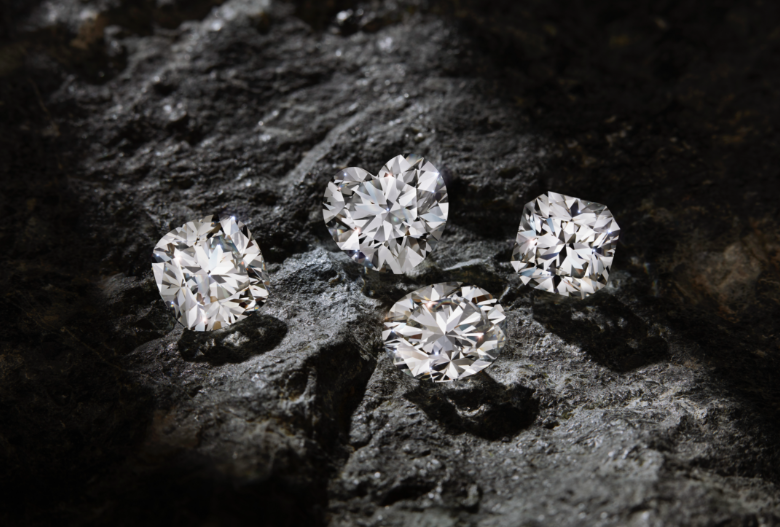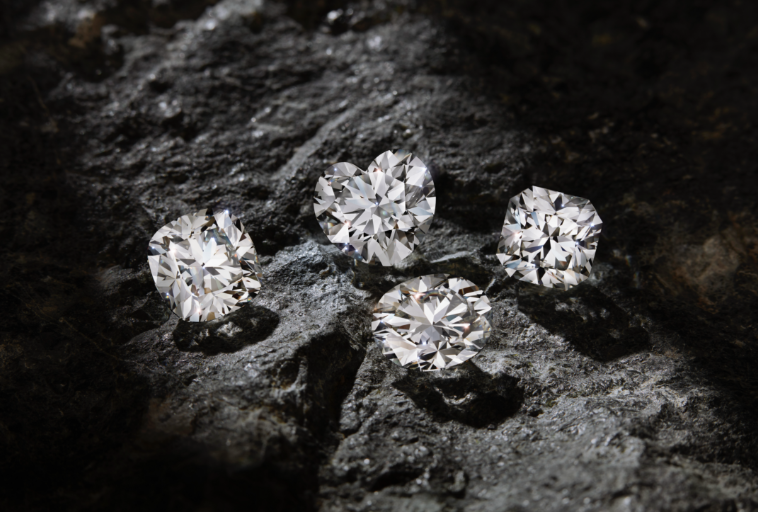Diamond Sourced
Where It’s From
These natural diamonds remain deep within the earth for hundreds of millions of years, until volcanic activity and magma transported them upwards towards the earth’s surface. Most diamonds are found in kimberlite pipes, which are vertical rock formations that are remnants of ancient volcanoes.
Today, natural diamonds are mined in Russia, Botswana, South Africa, Namibia, Angola, Zimbabwe, Canada, and Australia. With modern technology, diamond mining is more organised and ethical in this day and age, enriching its surrounding communities with jobs and skills training.
Ethics and Environmental-Friendliness

In De Beers’ Botswana mines, they partner with the local government for profit sharing, and are committed to sustainable development by conserving wildlife safaris in the area, so that the livelihoods of the communities are taken care of even if one day the diamond mines deplete. Natural diamonds transformed Botswana “from one of the poorest countries in the world to a middle-income country” with revenues from mining representing almost a third of its GDP.
Image by De Beers Forevermark
Image by De Beers Forevermark
Bathoen House Primary School, is a co-educational private school run by Debswana for its employees and other residents around Orapa, Letlhakane and Damtshaa Mines (OLDM). It offers state of the art computer facilities, a library and extracurricular activities including music, singing and swimming lessons.




Natural diamonds are formed deep within the earth’s surface more than a billion years ago, under extreme
temperatures (more than 1150 ºC) and high pressure (45,000 times greater than at sea level).
These
natural diamonds remain deep
within the earth for hundreds of millions
of years, until volcanic
activity and magma transported them upwards towards the earth’s surface. Most diamonds are found
in
kimberlite pipes, which are vertical rock formations that are remnants of
ancient volcanoes.
Today,
natural diamonds are mined in Russia, Botswana, South Africa, Namibia, Angola, Zimbabwe, Canada, and
Australia. With modern technology, diamond mining is more organised and ethical in this day and age,
enriching its surrounding communities with jobs and skills training.

Environmental-Friendliness
Some proponents may claim that lab-grown diamonds are made in a more environmentally friendly way, but there
is no substantial
proof to date.

The chemicals and conditions required to power the production of synthetic diamonds still require massive amounts of energy and water. 511kgs of C02 are emitted per polished carat of lab-grown diamonds, while in comparison only 160kgs of C02 are emitted per polished carat of natural mined diamonds. C02 emissions of lab-grown diamonds are high as they have to heat their ovens to 1,500ºC, requiring large amounts of energy.

NDTC employee sorting through rough diamonds, Namibia.
As for the natural diamond industry, much has changed since the Blood Diamond movie. There is a lot of work by
governments from where natural diamonds are mined, to organise mining technology to enrich the lives of its
citizens and communities.
In De Beers’ Botswana mines, they partner with the local government for
profit sharing, and are committed to sustainable development by conserving wildlife safaris in the area, so
that the livelihoods of the communities are taken care of even if one day the diamond mines deplete. Natural
diamonds transformed Botswana “from one of the poorest countries in the world to a middle-income country” with
revenues from mining representing almost a third of its GDP.

Bathoen House Primary School, is a co-educational private school run by Debswana for its employees and other residents around Orapa, Letlhakane and Damtshaa Mines (OLDM). It offers state of the art computer facilities, a library and extracurricular activities including music, singing and swimming lessons.
For South Africa and Russia, the natural diamond industry creates jobs for tens of thousands of its people. Diamond mining in South Africa alone employed over 16,000 people in 2018 — and taxes on diamond companies help build roads, schools and hospitals. As a result, a greater number of children in mining towns attend schools than in non-mining areas.